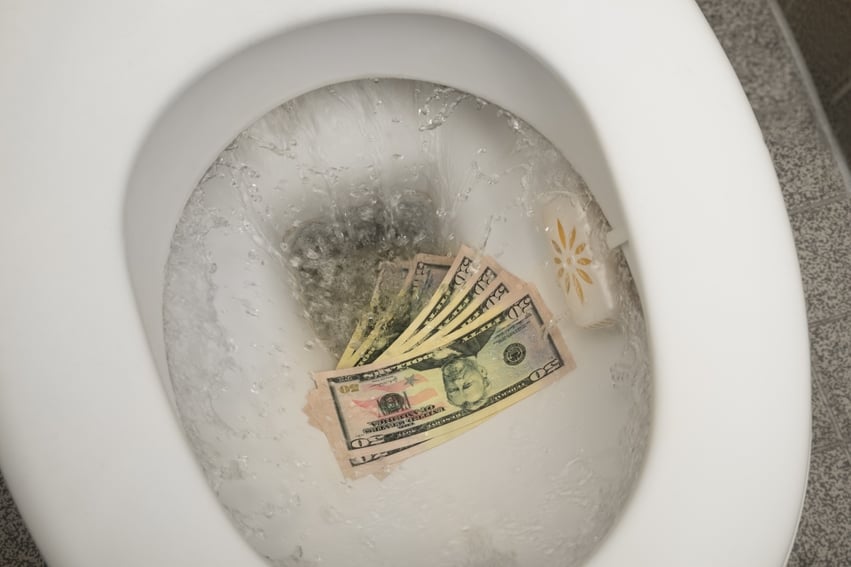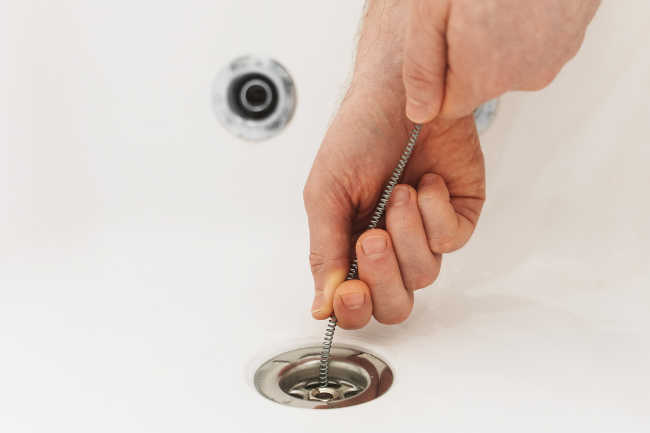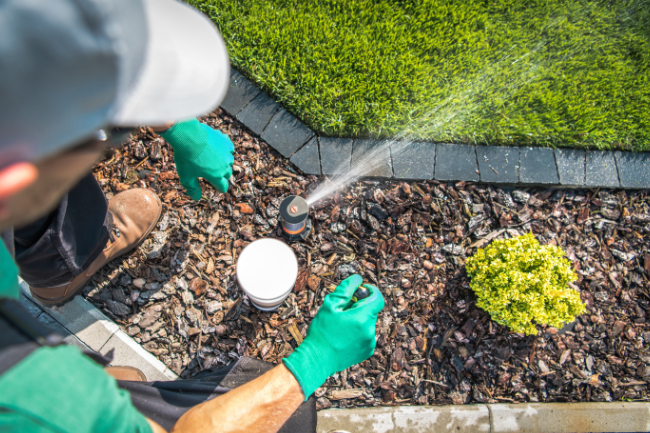No. 1 Cause of a High Water Bill and How to Fix a Running Toilet
Posted by William Heinselman on
 A high water bill in Sacramento can be due to a running toilet that needs repair. One of the worst culprits for wasting water in your home or business, a toilet with minor leaks, can add an additional $1,000 a year to your water bill. A toilet with major leaks can cost an extra $2,000 annually! If you want to learn how to stop a running toilet, read on to discover how to troubleshoot and repair your toilet to stop this waste immediately.
A high water bill in Sacramento can be due to a running toilet that needs repair. One of the worst culprits for wasting water in your home or business, a toilet with minor leaks, can add an additional $1,000 a year to your water bill. A toilet with major leaks can cost an extra $2,000 annually! If you want to learn how to stop a running toilet, read on to discover how to troubleshoot and repair your toilet to stop this waste immediately.
Is Your Toilet Constantly Running?
A toilet that runs constantly can waste gallons of water a day and adds to the cost of your water bill. If you're not sure whether your toilet is running all the time, we have two tests that you can use to determine if it is leaking.
- Dye Test: You can use a dye tablet or food coloring for this test. Remove the lid from your toilet tank (not the bowl) and drop in a tablet or a few drops of food coloring into the water. Wait for 15-20 minutes and check the toilet bowl for the presence of dye. If there is dye in the bowl, then you have a leaky toilet tank. (Just be sure to flush afterward to avoid staining your toilet bowl!)
- Sound Check: This one is easy. Walk up to your toilet and listen to it. A leak will produce a hissing sound. A stuck flapper will give you the sound of constantly running water.
A common source of a running toilet is a faulty or old flapper, which can become brittle or break down from chlorine and minerals in the water, resulting in a poor seal. Another reason is because the attached chain is too long and gets caught under the flapper when you flush. If your chain is too long, shorten it with wire snippers. Learn how to change your flapper.
Inspecting Your Toilet's Inner Workings
The other main parts of your toilet tank are the fill and flush valves. The fill valve is attached to the incoming water line and often has a float that cuts off the flow of the water once the tank is filled to the desired level. The flush valve is at the center of the tank and allows the water to leave the tank.
When you activate the flush handle, it raises the flapper, which allows the water to flow through the flush valve and into the toilet bowl, washing away any waste. If any of these parts is not working properly, it can allow water to leak from the tank, increasing the cost of water for your home or business.
Too Much Water: If your tank overfills, it may pour water down the flush tube after it is filled. Water should remain half an inch to one inch below the top of the flush tube once the tank is full. If it is filling above the tube, you need to adjust the water level of the tank by adjusting the float on the fill valve.
There is more than one type of float valve on toilets but one rule remains the same, no matter the type: If you raise the float, you raise the water level in the tank. If you lower the float, you lower the water level in the tank.
Fill Valves, Gone Bad: If your toilet has passed all of the aforementioned inspections but is still running, then it may have a bad fill valve. If you are handy, you should be able to make this repair for $50 or less.
Other Causes of High Water Bills
Now that the toilet is fixed, you need to look for any other leaks around the home and you may be able to save even more on your water bill. Leaky faucets, irrigations systems, and pipes can all contribute to the cost of water. A leaky faucet that drops one drip per second can waste more than 3,000 gallons of water a year, according to the Environmental Protection Agency (EPA). When you add this waste to that of a leaky toilet, you are needlessly spending a lot of money that can be saved by inspecting your toilets, faucets, and water pipes.
Need Help?
Many Sacramento homeowners are able to make many repairs around their homes. If, however, you need help with a running toilet or other plumbing leaks, contact Express Sewer & Drain. We can inspect your water and sewer systems and help you stop washing your hard earned money down the drain with a running toilet.
Topics: Home Plumbing







